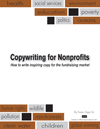What happens after the 18 hours are gone? The impact of your Facebook update has dwindled down to zip.
![]() That’s right. A new report (by global communications agency OMD) reveals that if people haven’t interacted with your update in the first 18 hours, they probably won’t ever interact.
That’s right. A new report (by global communications agency OMD) reveals that if people haven’t interacted with your update in the first 18 hours, they probably won’t ever interact.
In other words, you’ve got 18 hours to get people engaged … to get them to comment, like or share your Facebook update.
Takeaway #1: Consider posting about once a day to keep content fresh and to increase the probability of fan/reader interaction.
Want to boost the shelf-life of your updates? Want more interaction and engagement?
The day of the week makes a difference. The OMD report stated that Sundays and Tuesdays were the worst for user engagement. Whereas Thursdays and Fridays seemed best.
Their findings also show that a photo can boost the shelf-life by 9% (an additional 1.6 hours), while a video can extend it about 16% (2.9 more hours).
Contrast that to the shelf-like of a good video on YouTube which is measured in weeks – or even months if it goes viral.
Takeaway #2: Pay attention to engagement on the various days of the week. And use compelling photos and videos whenever possible.
However, other research shows . . .
The day of the week data from OMD is in complete contrast to a study by Dan Zarrella (The Social Media Scientist who analyzed 1.3 million updates on the top 10,000 Facebook pages).
His research showed updates published on Saturdays and Sundays receive a higher “like” percentage than those during the business week.
What else did he discover?
• Time of day: The peak time for “shares” is around 6pm. And the peak for “likes” is later at around 8pm.
• Post length: To get an update “liked” write one either very short (e.g., few dozen characters), or very long (e.g., over 750 characters). Longer updates also get more “shares” (peaks at about 460 characters and 700).
• Post type:
o Photos get the most “likes” and “shares” plus a high number of “comments”
o Text gets the most “comments” and is second only to photos in “likes”
o Video ranks second in “shares”, third in “comments” and “likes”
o Links always came in last place
He created a good infographic on it which I encourage you to study. (Note: I would have included it here but he didn’t share any code for embedding it. Rats!)
Final Takeaway: All this research and data can drive you nuts. My recommendation is to start with the guidelines in Zarrella’s infographic and then TEST to find out what works best for your nonprofit.
What does all this really mean?
All days of the week and time of day are not created equal. All content is not created equal. And you’ve only got about 18 hours to make an impact with a given Facebook update and get people engaged.
Beyond that, who knows for sure? That’s also why you need to test, test, test. Track your data and pay attention to your analytics. What day of the week … what time of the day … what type of content … which photos and videos … what triggers more comments, shares and likes … etc.
Find out through your own experience exactly how and what work best for your nonprofit.
For more on Facebook:
A contrarian article: Why Facebook won’t survive the decade
Look over the comments too – although most are the usual gobbly-gook, a handful are worth reading.

{ 1 trackback }
{ 0 comments… add one now }